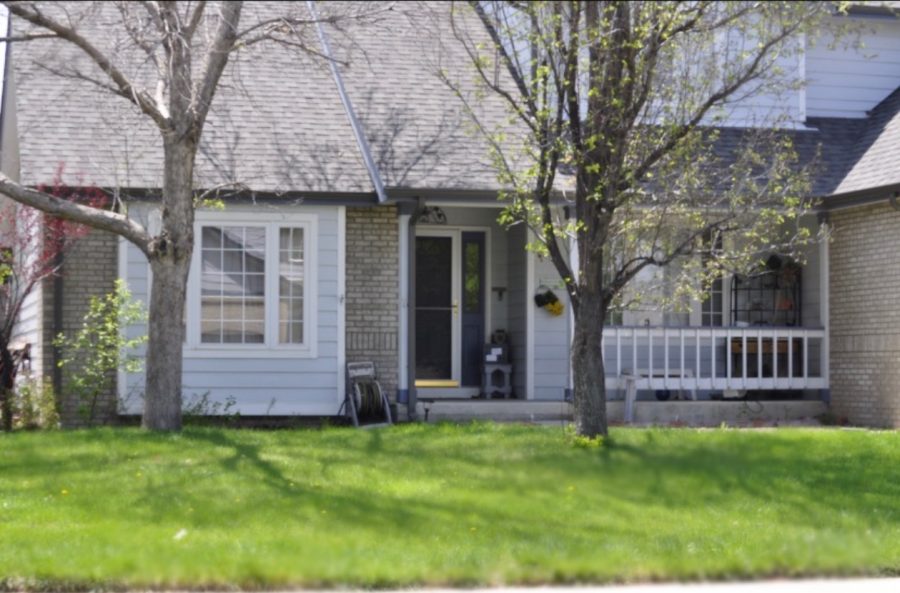Excessive development in suburban Colorado only harms the communities within it (Opinion)
As home development in Colorado begins to increase, the list of concerns regarding the impact on residents, schools, and the environment does as well
Suburban development is not always positive; it takes away many opportunities for community members.
February 25, 2022
As suburban areas in America grow and develop, there’s a major flaw that builders and city planners alike seem to overlook: there is a surplus of houses and a lack of activities and additional schools to accommodate the growing communities.
It’s not old news that America is reliant on cars and automobiles and has no solidified public transportation in most places (a conversation for another day), but it’s becoming frustrating to constantly rely on a friend, a parent, or an Uber to get to places that aren’t even that far from home. The main culprit in this major disadvantage? Excessive housing.
While development can be good for the local economy, it begins to turn sour when houses are the only things being built in an area. Instead of a diverse and enjoyable community for new and old families alike, it turns into random clumps of houses with nothing else but a small park, a few trails that lead to nowhere exciting, and the occasional “secret” hang-out spot that becomes overrun by weeds and thorns that pop bike tires of kids trying to have fun.
It’s beginning to happen locally in Mead, Firestone, and Frederick, and I know it’s a subject that’s particularly bitter when coming from teenagers and even younger kids.
Many of the older neighborhoods around here have some businesses that are in a walkable proximity, but there are none that captivate interest from the youth. There isn’t much that appeals to teenagers and younger kids in the area since it’s mostly an array of fast food, tire shops, and grocery stores. While businesses like those are important to a community, the lack of fun community places close to neighborhoods puts a damper on teenagers who want to enjoy their community without requiring a license or a ride to places.
Last year, the town of Firestone proposed a bill to build a water park in Central Park (right off of Sable Avenue by the Highplains Library and police station). As usual, it was declined since people concerned about taxes and noise (per many ‘Nextdoor’ posts) thought it was too much for the town. I am fully aware that I’d be well on my merry way to college by the time the park would’ve been completed, but it would’ve been great to see my brothers and other kids around the community be able to enjoy their teenage years, having fun there instead of locked away in their room, praying for the day they turn sixteen and can get their license.
On top of the mental health of isolated people in their neighborhoods, excessive development poses many environmental concerns as well. Prairie dogs, coyotes, and raccoons are just a minuscule amount of the animals being pushed out of their natural habitats. Housing developments taking their homes means also taking their food sources. While it’s sad that many pets left outside fall prey to predators, animals like coyotes are desperate to survive. They’re only getting “bolder” and coming into neighborhoods since that’s what humans are forcing them to do.
There’s also the issue of schools overflowing with students and having no room to expand and accommodate the rapid growth of kids flowing in from new developments. 500+ new homes in growing developments will eventually require a new high, middle, and elementary school to balance out the student surplus at schools within the area. Community members might be concerned about the costs of building these new schools (when the necessary time comes) but the financial concerns could be reduced greatly if opportunities like a water park, a new small shopping complex of local shops, etc. allowed people from other towns to visit Firestone, Frederick, and Mead and help the town grow profit to afford new educational facilities.
Take Erie for example. The town was barely considered a town back in 2001. Now, in 2022, it is prospering thanks to considerate city planning to incorporate shopping districts, recreational activities, and neighborhoods into one walkable and enjoyable area. Erie gained a lot of its wealth from offering fun and affordable activities for families and teenagers, which caused a boom in their economy since people from surrounding towns visited Erie to enjoy their facilities. If Mead, Firestone, and Frederick took a page from Erie’s book and planned for businesses that weren’t fast food, tire shops, grocery stores, or car washes, they might experience their own boom of prosperity as well.


